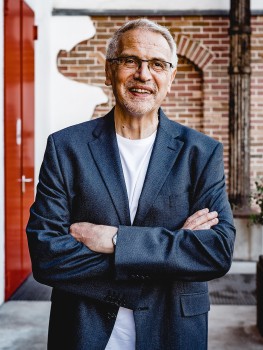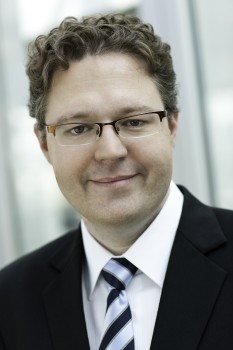
Pensions are safe – or not?
Provision for our old age concerns all of us. In this fact-check, Prof. Aloys Prinz, Director of the Institute of Public Economics II at the University of Münster, and Fabian Dittrich, one of the two spokesmen of the German Institute of Old-Age Insurance, provide an overview of how the pension system is financed and they talk about the future challenges posed by demographic change.
Norbert Blum, a member of Germany’s Christian Democratic Union party (CDU) and Minister of Labour and Social Affairs from 1982 to 1998, called upon people to trust the pension system when, in 1986, he said, “Pensions are safe”. Not many statements from a politician have stayed in the minds of the German population as much as this one did. But is it actually true?

Fabian Dittrich: Norbert Blüm was a Christian from a working-class background. As such, he worked his way up from his working-class environment to one of the primary political offices of our country. The fact that he was a champion of the state pension scheme must be seen from this perspective. In 1986 he not only displayed his statement “Pensions are safe” on hoardings, which were the ‘online marketing’ of the 1980s. He embodied it, lived it and, at the end of his time in office, positively swore by it. The statement is true inasmuch as there is still a state pension. But it leaves some decisive questions unanswered. Are pensions high enough? And, in particular, for whom are pensions high enough?
What effect is demographic change having on the pension system?
Aloys Prinz: State pensions are financed on a pay-as-you-go basis. The income received by the state pension scheme is used in the same year to pay out pensions. No noteworthy reserve of capital is made. In this system, the income received by the state pension scheme depends on the number of people in the workforce and their wages and salaries; expenditure depends on the number of people receiving pension payments and on the level of their pension. If the number of people receiving a pension increases over time – along with their life expectancy – then the state pension system will need higher income. The state pension system is under pressure from three sides: a decrease in the size of the workforce, a rise in the number of people receiving a pension, and an increase in how long the pension is received.

Can the state pension scheme continue to function in the future?
Aloys Prinz: The possibilities for reforming the pay-as-you-go system are limited. This means that some thinking is now being done on introducing radical reforms. These range from redesigning the state pension system and moving towards having the same basic pension for everyone, to introducing a mandatory liability for everyone over the age of 18, regardless of their employment status, to pay contributions. In whatever way the state pension system is reformed, further extra forms of old-age provision will be necessary. These might include, in particular, compulsory company pension schemes such as other countries have already had for some while now. In addition, private provision for old age is still necessary.
Fabian Dittrich: The state pension will continue to function as a provider of basic security, and it will continue to be the most important source of income for many people in our country. But if we’re talking about people retaining their living standards, that won’t be possible if they don’t provide for their old age on their own initiative. Nowadays, young people have to start thinking about their financial future much earlier than their parents or grandparents did. Additional income in old age will come from extra, fully-funded pension schemes. There is a wide range of options here, and it is important that people inform themselves at an early stage.
Norway has the largest state pension fund in the world and it promises its citizens a guaranteed pension – even if they haven’t worked. This is an example of an alternative to the pay-as-you-go system characteristic of the German pension system. What can Germany learn from other pension systems?
Aloys Prinz: Norway has a very high level of income from oil exploration, and it channels this income into its pension fund. But such a fund would also be possible even without such a source of income. There has already been a proposal that Germany should borrow money at low-cost and invest it on international stock markets. The net yields would then make it possible to pay for an equal dividend for everyone in their old age. The most promising method is the company pension scheme – which could be linked to a state fund. Additional partially-funded provision for old age is a key to future success.
Fabian Dittrich: Germany has a very old pension system – set up in 1889 under Bismarck – which tends to be romanticised today. The idea was not “pensions are safe”, as Norbert Blüm declared for everyone in the country. The idea in Bismarck’s day was to prevent people who had clearly exceeded their natural life expectancy from becoming destitute. At that time, people died at 40 and pensions were paid out from the age of 70. The world has changed an awful lot since then – thank goodness! But we cannot model ourselves on Norway – unless we find large reserves of oil and gas on our territory – because it is primarily from its income from these raw materials that Norway finances its pension fund.
This article was first published in the University newspaper “wissen|leben” No. 2, 6 April 2022.
Further information
- Prof. Aloys Prinz at the University of Münster
- Deutsches Institut für Altersvorsorge (German Institute of Old-Age Insurance; only in German)
- The original article in the University newspaper "wissen|leben" (only in German)
- All issues of the University newspaper at a glance (only in German)
- All the articles in the dossier on “Demographic change”
